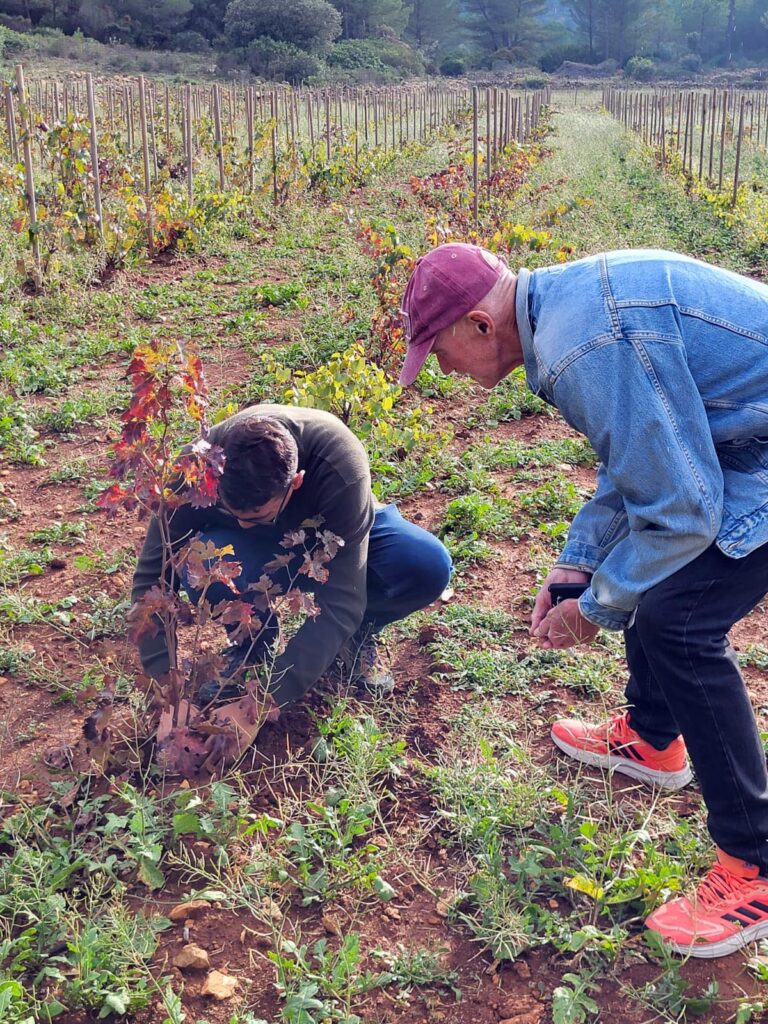4 diciembre, 2024

Colin Harkness
Wines have been made in the Alicante Province since Phoenician times. The Romans developed the concept into a commercial enterprise; the Moors (North Africans), perhaps surprisingly given Muslim tea totalism, continued with typical business acumen and zeal. Then, somewhere along the line, the Riko-Mestre family arrived on the scene!
Yes, current incumbent, 31 years old Oscar Mestre can easily trace back his family’s wine business for three generations, when in 1921 the family took the gamble (following phylloxera’s decimation of Europe’s vineyards forcing family members to emigrate to Argentina) of restarting their commercial wine business. Indeed, if Oscar was so inclined he could do some further family tree digging and probably find that winemaking has been in the family’s DNA for up to 8 generations!
However, he hasn’t got time! Oscar is a very focussed, passionate young man who, after a lengthy apprenticeship working in all of the different positions in the family’s very well-established Bodegas Riko, has had his father’s blessing to start his own enterprise. We’ve visited, toured, tasted and chatted – an estimated hour and a half, ended up being a visit of over 4 hours – and it’s clear to me that here is a young guy who is going places!
Rather than continue in the family’s successful bulk wine business, which includes the retail outlet, well known to many a Jalón local and visitor (of which there are many because of the popular weekend Rastro and traditional farmers’ market), Oscar decided to up the ante. His entry level wine, a well-chosen blend of local darling variety Giró, providing the lion’s share, and internationally famous, originally French, Syrah, retails for about 10 Euros. Not at all expensive, but a considerable jump from the shop’s pour-your-own barrel stored wine. Oscar’s current top wine sells well at about 25 Euros (but keep your eyes out for at least one addition to the portfolio which will top this, in terms of its price, perhaps reaching 40 Euros).
In order to reach this stage – his own nascent business and establishing himself as a renowned winemaker, not just locally, but nationally and slowly internationally – he has put himself through arduous training. In common with many of the new generation of Spanish winemakers he has had the benefit of a long history of family winemaking, therefore the opportunity to learn from his forbears.
Plus, he has travelled extensively in Spain working others’ harvests, as well as international travel doing the same. He sets aside a certain amount of his profits for the purchase of wines he feels he needs to taste; he reads extensively; and he has worked with others learning from them, including the internationally famous near neighbour, Pepe Mendoza, for whom we share the utmost respect.
Putting all this together Oscar went to see the family’s parcellas, small vineyards, assessing which grapes he considered best for his wines, as well as those of friends and neighbours, whose vineyards he now works. A strong believer in tradition as well as the high quality they can provide, he’s looking predominately for old, local varieties, Giró, Moscatel, Merseguera and the very rare Trepadell for example. Vines that have established themselves in the area for hundreds of years. His vines where the Jalón/Llíber valley levels out, grow in soils very different from his vineyards clinging to the sides of the mountains rising above; different again from his small parcella discovered at 1,000+ metres above sea level in a small valley sheltered by the peaks!
Needless to say, the wines coming from these distinct areas will all taste slightly different, so, blending the different styles comes into play. This is the great skill of a fine wine maker. It’s true that good wine is made in the vineyard – the old homily attempting to explain that what happens in the vineyard is the most important part of winemaking. However, the winemakers’, albeit low intervention, will contribute to the excellence of the finished product. I’m pleased to say that Oscar, believes, as do I, in recognising that different vintages will provide necessarily slightly different wines, because of the different growing conditions in terms of each year’s weather.
And speaking of wine – here are my thoughts on the several that we tasted, and certainly enjoyed. A word of caution, though – the production is limited, 30,000 bottles a year, so buy as soon as you can!
First out of the trap was a white blend including Moscatel and what he believes to be Giró Blanc. I thought it a great start – with apricot and lemon zest fruit, some menthol and fennel aromas with mineral notes and a touch of Mediterranean salinity, retailing at about 10 Euros. I’ll be buying this again, for sure.
Next was a monovarietal using venerable, 90 year old Moscatel vines made in a slightly ‘orange wine’ style – a very good introduction to the style. Readers will know that such old vines produce fewer bunches but they are often far richer. Resulting wines are fuller on the palate anyway, and using this method, coupled with fermentation below a veil of yeast, ensuring less oxygen, make a deep, complex wine that retains fresh acidity and pairs so well with a variety of dishes. Another hit!
Trepadell was often grown in the same vineyard as red Giró and used in a blend to bring down the high alcohol expected from Giró and to increase the ‘clarete’ style’s acidity. Interestingly, Oscar thinks that Trepadell may be the future of white wine coming from the valley due to the difficulty Moscatel has with climate change. This year, for example, a 90% loss of harvested Moscatel was reported, due almost entirely to the long drought, which of course preceded the dreadful deluge of but a couple of months later.
Our final white wine was made entirely with Giró Blanc – don’t bother looking up this variety, you won’t find it! Oscar has discovered a vineyard, in a secret location for obvious reasons, that is home to vines that are different to any others in the area. He believes it may be a ‘new’ variety, a natural off-shoot of Giró red, as happened in Rioja with Tempranillo. Testing and analysis are currently being undertaken – Oscar, and ourselves wait with mounting excitement!
If not, it’s likely to be an unusual Garnacha Blanca – but, no matter, really, as the wine is lovely! It’s had a little time in oak to give extra depth and some complexity, though the fruit remains at the forefront. Don’t forget Oscar is a fine wine maker and won’t make the mistake of the Californians and Aussies of the last generation whose use of oak obscured the fruit almost completely!
Onto the reds and here it’s a good time to say that Oscar puts exactly the same effort, planning thought etc into his whites as he does with his reds. This has not always been the case here in Spain. Exhibit A – Rioja whites of 10+ years ago and their world famous reds. Thankfully that Rioja error has been and is being corrected nowadays. I’ve been saying increasingly over the last, perhaps, ten years that Spanish white wines are now amongst some of the world’s best.
His entry level red is a Giró/Syrah blend, though mostly local variety Giró. Renaix de Giró is a very good wine indeed for its low price. Perfectly balanced between good fruit content, soft tannin and fresh acidity with dark fruit, blackberry, plum perhaps damson too. A little earthiness bringing to mind autumnal aromas as well as some dried local mountain herbs and just a touch of spice.
Wine number six was a Giró monovarietal 2021 which has had 12 months in two and three years old 500 litre barricas. Another lovely wine, stepping up in quality and price at around the 20 – 25 Euros mark. Dark fruits with some lighter loganberry fruit too. Again there’s a harmony between acidity, fruit and tannin with the latter making a firmer presence here, meaning a more subtle wine made for a fine dining table. A good length of finish too.
Finally, Oscar’s top wine thus far, perhaps best described as his Grand Cru! We tasted a cask sample, taken from the barrel as we watched, almost holding our breath. Lightly coloured, full and rounded on the palate exhibiting, again, perfect balance. It’s rich, subtle, elegant and well – even though not yet bottled (at the time of tasting), quite stunning!

Se advierte al usuario del uso de cookies propias y de terceros de personalización y de análisis al navegar por esta página web para mejorar nuestros servicios y recopilar información estrictamente estadística de la navegación en nuestro sitio web.
0 comentarios en